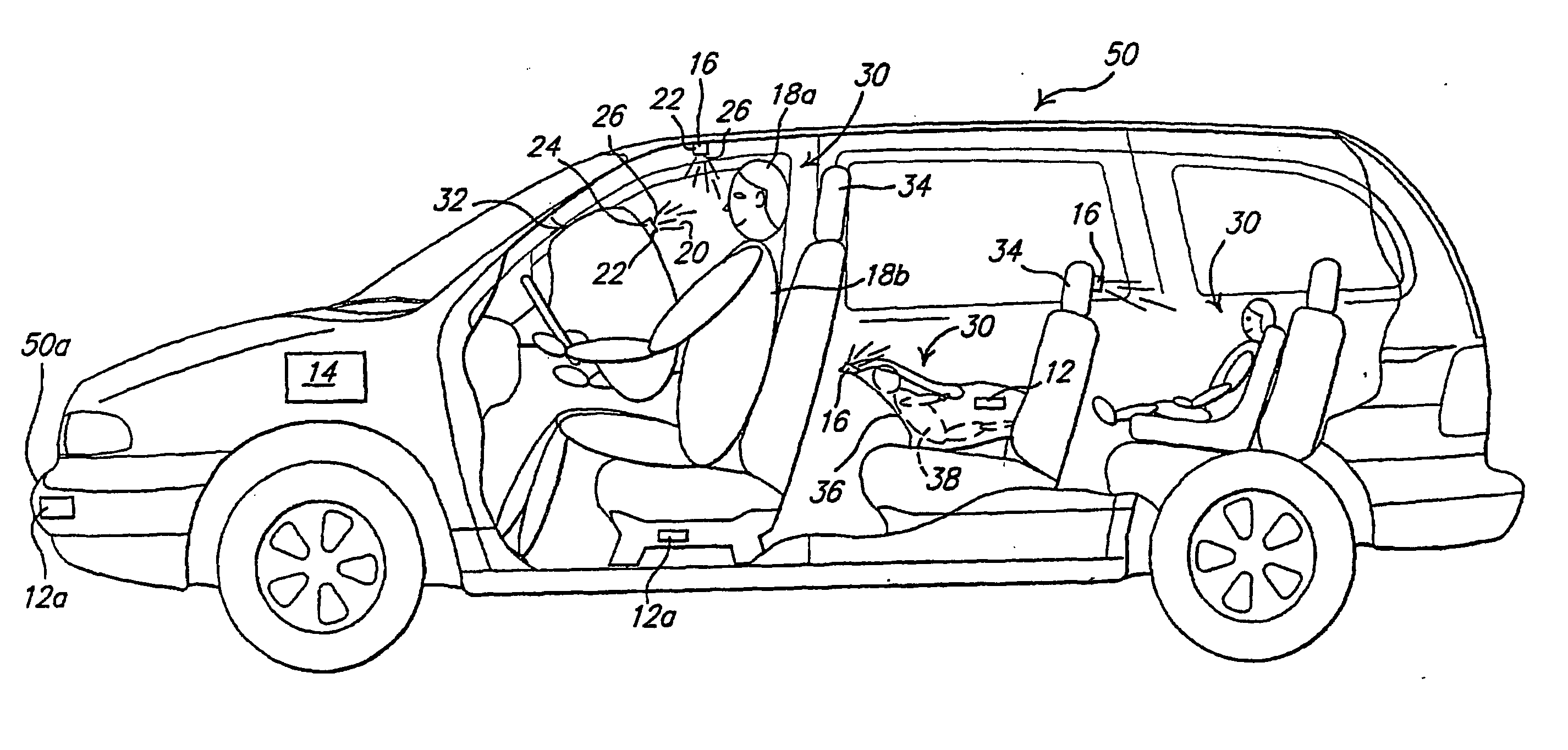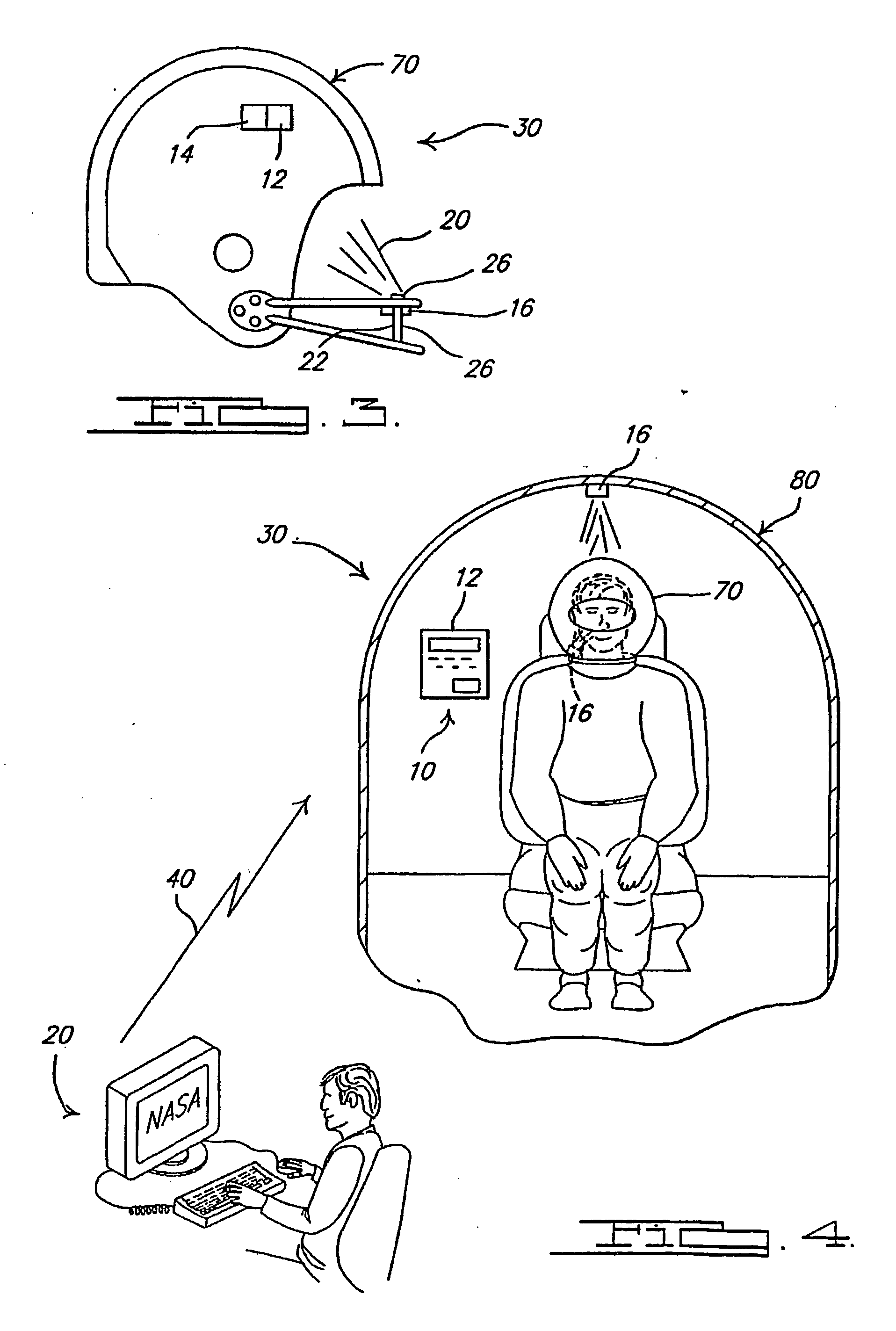System and method of active neuro-protection for detecting and arresting traumatic brain injury and spinal cord injury
- Summary
- Abstract
- Description
- Claims
- Application Information
AI Technical Summary
Benefits of technology
Problems solved by technology
Method used
Image
Examples
Embodiment Construction
INVENTfON
[0025] Referring to FIG. 1, a block diagram of a system of active neuro-protection which affects the brain of an individual is generally shown at 10. Active neuro-protection is utilized to sense and arrest or slow down the traumatic brain and / or spinal cord injury cycle within a predefined time period, such as while the injury is occurring, or for a predetermined period of time thereafter, or the like. The system benefits a user or individual 18 who receives the neuro-protective drug to arrest the cascading injury cycle within the brain or spinal cord as a result of a traumatic injury.
[0026] The system 10 includes a sensing mechanism 12 for sensing the occurrence of a trauma-inducing event. There are a multitude of environments in which an event may occur that results in the transmission of forces, including but not limited to acceleration and deceleration forces, to the brain 18a of an individual 18 over a period of time. One example of an event is a transportation-relate...
PUM
 Login to View More
Login to View More Abstract
Description
Claims
Application Information
 Login to View More
Login to View More - R&D
- Intellectual Property
- Life Sciences
- Materials
- Tech Scout
- Unparalleled Data Quality
- Higher Quality Content
- 60% Fewer Hallucinations
Browse by: Latest US Patents, China's latest patents, Technical Efficacy Thesaurus, Application Domain, Technology Topic, Popular Technical Reports.
© 2025 PatSnap. All rights reserved.Legal|Privacy policy|Modern Slavery Act Transparency Statement|Sitemap|About US| Contact US: help@patsnap.com



